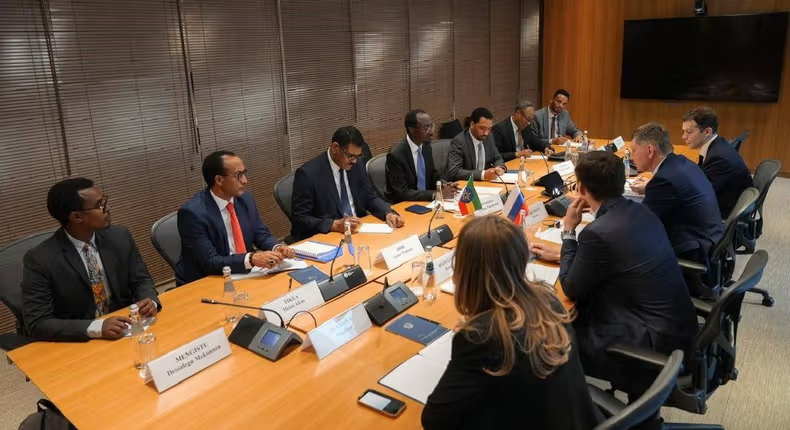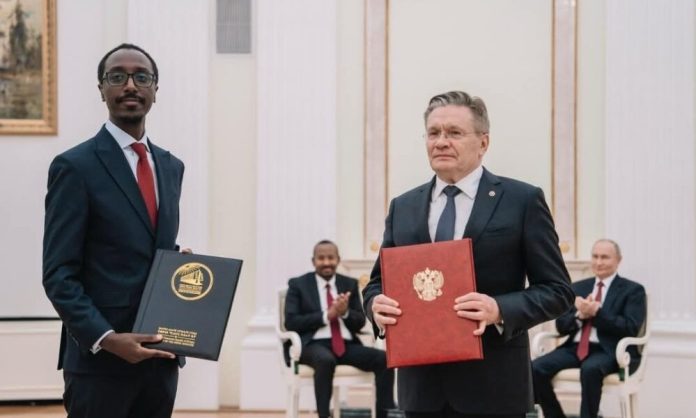Addis Ababa’s dual pursuit of trade liberalisation and nuclear energy signals a pragmatic shift in Africa’s sustainability and energy diplomacy.
Ethiopia has moved to deepen ties with Russia, seeking Moscow’s formal backing for its bid to join the World Trade Organization while advancing a technical roadmap for a potential nuclear power plant during talks in Moscow in September 2025. Ethiopian ministers and Russia’s state nuclear corporation signed an action plan to begin feasibility work, workforce training and institutional development, and Russian officials publicly pledged diplomatic support for Ethiopia’s WTO accession. These are practical manoeuvres with immediate consequences for energy access, industrial strategy and diplomatic alignments across Africa.
The meetings were concrete rather than symbolic: Rosatom and Ethiopia’s electricity agency agreed a staged action plan aimed at producing a feasibility study and strengthening regulatory capacity, while senior Russian ministers signaled support for Ethiopia’s WTO negotiations. Addis Ababa is pursuing simultaneous tracks; energy, trade and geopolitics, to secure technology, markets and alternative financing as it seeks to expand industrial capacity.

World Bank data put Ethiopia’s national electrification at about 55 per cent in 2023, with urban coverage far higher than rural access. The recently commissioned Grand Ethiopian Renaissance Dam adds several gigawatts of generating capacity, Reuters reported the GERD at roughly 5,150 megawatts, but a nuclear project demands different investments: grid modernization, decades of operation and sustained financing.
Large hydropower and nuclear plants both deliver baseload power but have distinct fiscal, environmental and institutional footprints.
Across Africa, nuclear projects are becoming more visible. Egypt’s El Dabaa project, roughly 4.8 GW supplied by Russian technology and reported construction financing of around $28 billion, largely supported by Russian state credit, is the continent’s most advanced new nuclear build. Several governments are evaluating small modular reactors or intergovernmental agreements with suppliers to secure baseload electricity while seeking to reduce expensive fuel imports. That trend alters the energy map: it can lower operational carbon intensity but introduces questions about waste management, water demand and long-term liability.
Read also: Uganda reclaims World Bank funding after two-year freeze
Financing will determine outcomes. Russian financing models, typically state credit lines paired with long-term construction contracts, can deliver projects on schedule but may create debt-service pressures. Ethiopia’s WTO accession, supported diplomatically by Russia, could expand trade opportunities and ease access to alternative capital, yet accession also imposes trade obligations that may limit some policy instruments for nurturing local green industries. Policymakers must balance immediate energy gains against fiscal health and policy space.

Regulatory capacity and human resources are practical constraints often overlooked in headline diplomacy. Nuclear energy requires independent regulators, emergency planning, waste storage plans and a pipeline of trained engineers and technicians. Agreements that include training and technology transfer are helpful, but independent oversight, transparent procurement and regional technical cooperation are essential to turn capacity into safe, sustainable delivery. The test is measurable: megawatts delivered, cost per kilowatt-hour and demonstrable safety protocols over decades.
There are tangible opportunities if projects align with development objectives. Reliable baseload power can stabilize grids, enable industrial parks, and accelerate decarbonization of transport and industry. Ethiopia is already promoting electric vehicles and local assembly as a means to preserve foreign exchange; cleaner, reliable electricity would amplify those benefits.
The continent still faces vast access gaps: sub-Saharan Africa accounts for the majority of people without electricity, with countries such as the Democratic Republic of Congo and Chad recording access rates in the low twenties and low teens respectively, a reminder that generation alone will not resolve distributional shortfalls. Any new generation capacity must therefore be paired with distribution investment and targeted rural electrification to be socially sustainable.
Geopolitics will remain a shaping force. Russia’s deepening engagement in nuclear and energy projects across Africa reflects a wider diversification of external partners. African governments insist they are seeking pragmatic options, but sustainability outcomes will depend on contractual clarity, environmental safeguards and local capacity to monitor commitments.
Civil society and regional institutions have a clear role: translating diplomatic pledges into enforceable timelines and community-level protections. Egypt’s El Dabaa, for example, is scheduled for staged completion through the late 2020s with Rosatom-backed financing and underscores how African nuclear ambitions commonly span decades from agreement to commercial operation, requiring multi-decadal oversight and clear milestones.
Ethiopia’s dual pursuit of WTO accession and a nuclear roadmap is therefore consequential. Properly governed, the combination could widen energy options, support industrialization and contribute to a lower-carbon trajectory in parts of the economy. Mismanaged, the same moves could increase debt exposure, create regulatory gaps and generate environmental risks.





